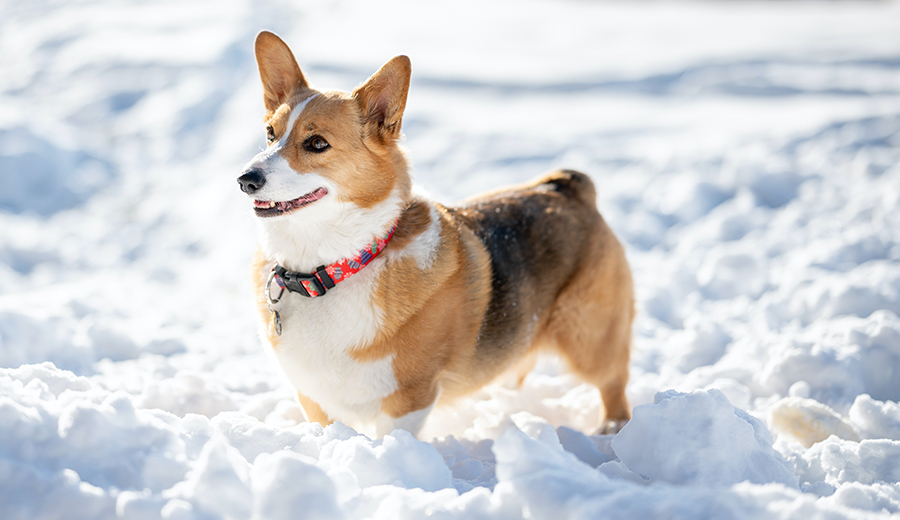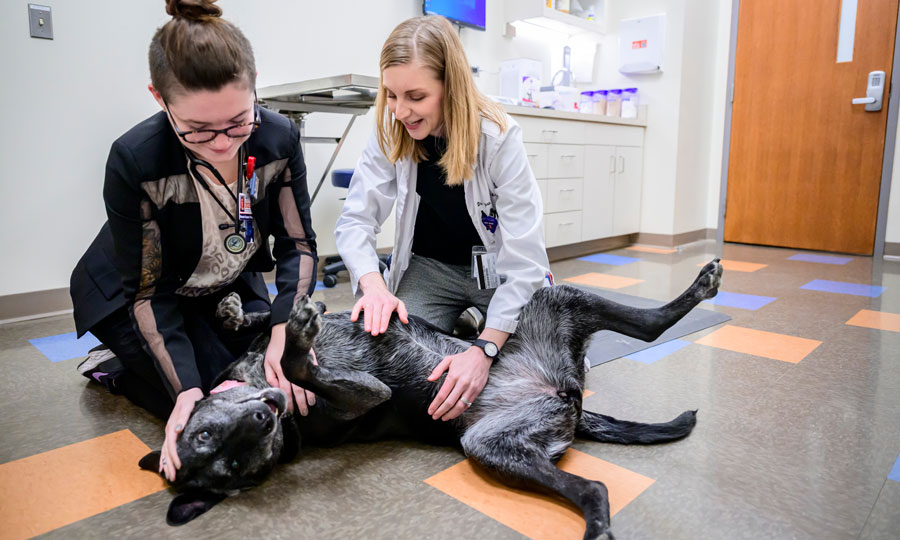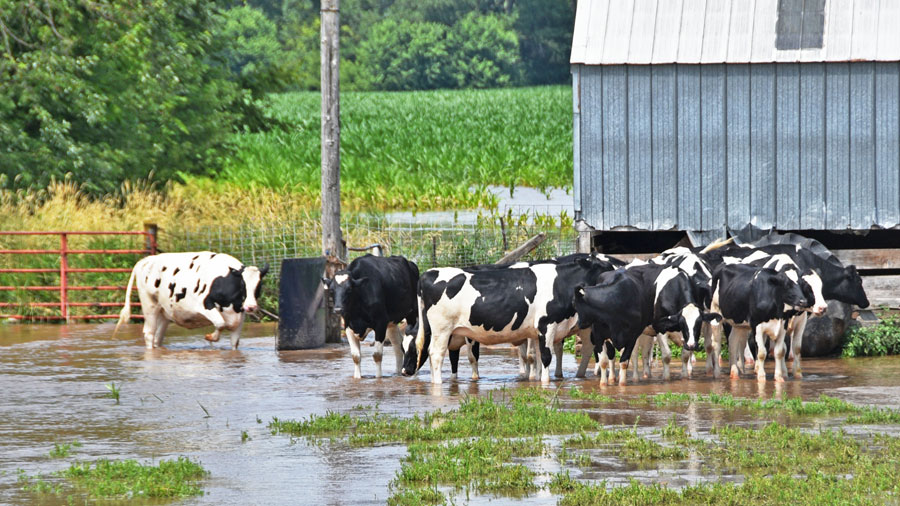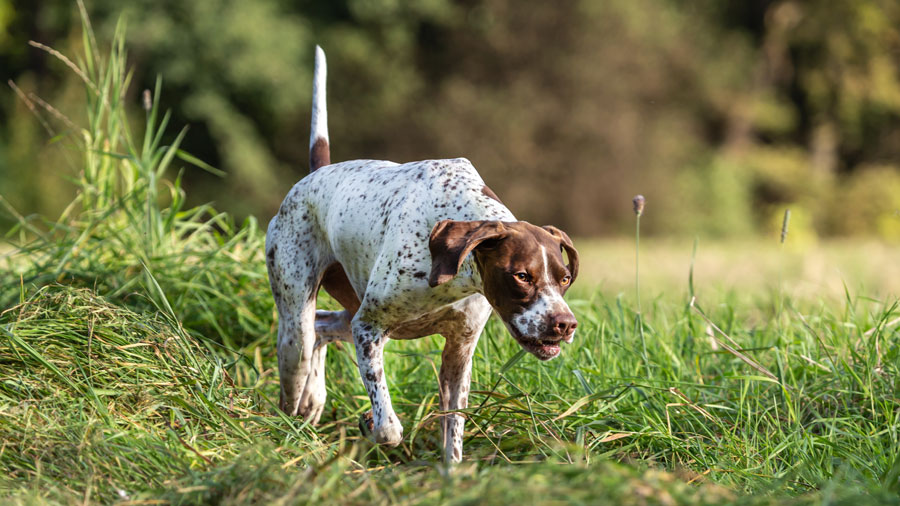As the days inch further and further into winter and frigid temperatures, Dr. Gene Pavlovsky, director of the University of Illinois Veterinary Medicine South Clinic, has important winter safety tips for those caring for pets.
Cold Winter Temperatures
Just like humans, our pets can develop hypothermia, or a drop in their body temperature, after being outside in cold temperatures for too long. Hypothermia becomes even more likely for dogs that are housed outdoors.
“There is no straightforward answer to how cold is too cold and how long is too long to remain outside, because there are so many variables,” Dr. Pavlovsky says. “For most dogs, it is probably safe to be outside for a very short period—just enough time to eliminate—even in extreme cold. However, to be safe, it’s probably best to discuss this with your veterinarian, because there may be individual recommendations fitting one pet but not another.”
Likewise, how long dogs can be outside in relatively cold temperatures depends on the individual pet. However, Dr. Pavlovsky points out, “It is reasonable to assume that prolonged direct contact with snow and ice is more likely to result in frostbite.”
Owners should consider size and length of their pet’s fur coat when gauging how long an animal can remain outside. Shorter fur offers less protection against chilly temperatures, so those pets may benefit from some extra help.
“If your dog tolerates clothing and footwear, it’s probably best to put those on,” says Dr. Pavlovsky, “especially for short-haired and small breeds. These protections can help minimize heat loss and exposure. For example, good-quality footwear that does not cause discomfort can allow a dog to spend more time outdoors without getting frostbite on the feet.”
In addition to keeping low temperatures and length of cold exposure in mind, be sure to supervise your dogs when snow and ice are present. Dr. Pavlovsky says, just like for humans, “Walking on hard snow and ice may result in slips, falls, and lacerations for your pets.”
Signs of Cold Exposure
If pets are accidentally left in the cold for too long and do develop hypothermia, owners should look for signs and symptoms to know when a veterinarian is needed.
“Signs of hypothermia may include tiredness, shivering, pale skin, shallow breathing, and muscle stiffness,” Dr. Pavlovsky states. “Frostbite—usually on the feet—can result in lameness of various degrees and pale, firm and cool skin, although extent of injury depends on the amount of time that has passed since exposure and on the degree of frostbite.”
If these signs are present, it is best to contact a veterinarian right away. While waiting to see the veterinarian, you can warm your pet at home by ensuring they are dry and free of snow and ice and by wrapping them in blankets or thick towels warmed in the dryer.
Ice Melt
Pet owners also need to look out for exposure to ice-melting products. Pets may accidentally consume these products by eating treated snow or licking the products off the pads of their feet.
“Ice-melting products are usually made up of different kinds of salts, containing magnesium, potassium, calcium or sodium,” says Dr. Pavlovsky. “Ingestion can cause vomiting and diarrhea, sometimes severe enough to cause dehydration or even tremors and seizures, depending on amount ingested and size of the pet.”
While there are pet-friendly ice melting products available that do not contain these salts, there are also other ways to prevent contact with these harmful products. “Wearing shoes, wiping the feet with a wet cloth or baby wipes, supervising to avoid snow ingestion—especially when treated—and keeping ice-melt products out of pets’ reach can all reduce chances of injury,” says Dr. Pavlovsky.
Gatherings
Amid the recent canine respiratory illness outbreak, it is also important to consider protection for pets when traveling during the winter holidays.
“The recommendations for pets are similar to those made for people during periods of respiratory disease outbreaks. Keep dogs up to date on vaccines for known respiratory pathogens and avoid congregating dogs in large groups indoors, if possible,” Dr. Pavlovsky advises.
Remember that newly vaccinated dogs should avoid contact with other dogs for two weeks while the vaccinations do their job of boosting the pet’s immune system. For this reason, make sure pets receive their vaccines at least two weeks before they travel for the holidays.
If you have any questions about winter safety for your pets, please contact your local veterinarian.
By Lauren Bryan
Photo by Peter Pryharski on Unsplash




